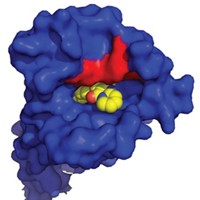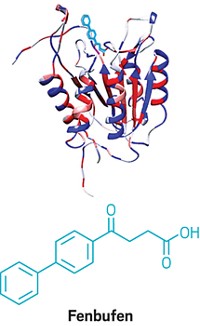Advertisement
Grab your lab coat. Let's get started
Welcome!
Welcome!
Create an account below to get 6 C&EN articles per month, receive newsletters and more - all free.
It seems this is your first time logging in online. Please enter the following information to continue.
As an ACS member you automatically get access to this site. All we need is few more details to create your reading experience.
Not you? Sign in with a different account.
Not you? Sign in with a different account.
ERROR 1
ERROR 1
ERROR 2
ERROR 2
ERROR 2
ERROR 2
ERROR 2
Password and Confirm password must match.
If you have an ACS member number, please enter it here so we can link this account to your membership. (optional)
ERROR 2
ACS values your privacy. By submitting your information, you are gaining access to C&EN and subscribing to our weekly newsletter. We use the information you provide to make your reading experience better, and we will never sell your data to third party members.
Biological Chemistry
Cystine Imposters Curb Crystallization
Crystal Engineering: Molecular mimics suggest therapeutic strategy for rare kidney disease
by Bethany Halford
October 14, 2010
| A version of this story appeared in
Volume 88, Issue 42
Using molecules that closely mimic the structure of the dimeric amino acid L-cystine, chemists have discovered a way to suppress formation of large L-cystine crystals. The finding, reported in Science (2010, 330, 337), could lead to a potential therapy for cystinuria, a rare and difficult-to-treat kidney disease in which stones—aggregates of L-cystine crystals—block ducts in the kidney.
Although L-cystine stones occur far less frequently than other types of kidney stones, it is an extremely painful condition.
"Preventive therapy has really not changed in more than 30 years," says David. S. Goldfarb, a cystinuria expert at New York University's School of Medicine and coauthor on the current report. "The common prescriptions include restriction of dietary sodium and protein intake, high fluid intake, and certain medications that we call cystine-binding thiol drugs." Those drugs tend to have unpleasant side effects, such as nausea and skin allergies.
Goldfarb approached his NYU colleague Michael D. Ward, a chemistry professor, to see whether Ward's expertise in crystallization might bring new insight to the problem of L-cystine kidney stone formation. Ward examined the L-cystine crystals using atomic force microscopy and noted they had a spiral growth pattern in which L-cystine molecules bind to the edges of hexagon-shaped hillocks on the crystal surface.

Ward reasoned that molecules with structures similar to L-cystine might bind to the preferred crystal growth sites and retard crystal growth. Indeed, his team observed that L-cystine dimethyl ester (CDME) and L-cystine methyl ester (CME) slow crystal growth at the nanoscale and reduce overall crystal size, which could mitigate stone formation.
"This discovery is elegant in the sense that it's simple," Ward says. CDME and CME act like imposters, readily binding to L-cystine molecules on the crystal faces via sulfur-sulfur and hydrogen-bonding interactions, he explains. These compounds, however, have methyl groups that block L-cystine attachment to growth sites when they bind to the growing step surface. "Very low concentrations—as little as 1% of the solute concentration—have a pronounced influence on the growth rates," Ward notes.
"If this approach does indeed work therapeutically—and we're doing mouse studies right now—it will be a nice example of translational research from physical science to the medical sector," he adds.
A commentary that accompanies the Science paper notes that the finding "is encouraging, but the path to clinical practice is very long." Nevertheless, commentary authors Fredric L. Coe of the University of Chicago and John R. Asplin of Chicago-based Litholink Corp. add that Ward's molecular design approach "could identify other compounds that inhibit cystine crystallization. Likewise, at least in principle, it could provide candidate drug prototypes for the far more common calcium oxalate, calcium phosphate, and uric acid stones."






Join the conversation
Contact the reporter
Submit a Letter to the Editor for publication
Engage with us on Twitter